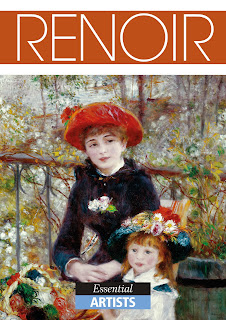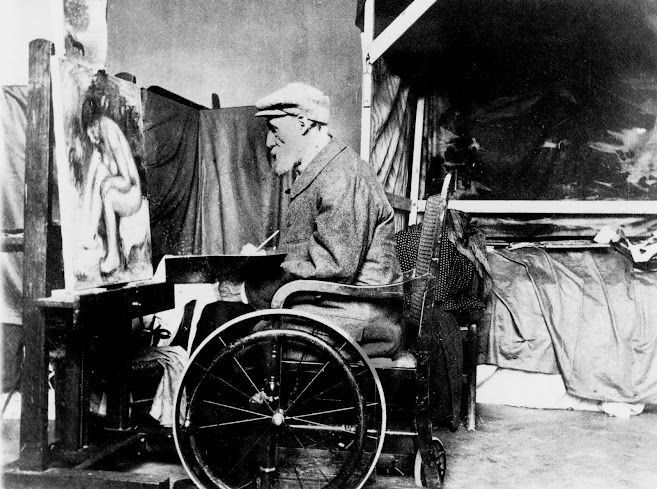Renoir
Available now as an ebook!
 |
| Sabine Miller |
Renoir was renowned for his works with their vibrant light and color and the harmony of the lines he portrayed within his landscapes and figure paintings. At the beginning of his prolific career he employed the Impressionist techniques, where detail was denied and replaced with soft fusions between characters and their surroundings. While he moved away from this style in the middle of his career – known as his Ingres Period, where he concentrated on more definition like the conventional and traditional painters – he returned to the softness of his earlier style toward the end of his life.
Renoir was greatly influenced by artists such as Rubens, Titian, Raphael, Eugène Delacroix, and his contemporary and friend, Claude Monet (1840-1926). Alongside Monet, he became obsessed with painting en plein air and exploring the subject matter provided by the open countryside toward the late 1860s. He firmly believed that black did not produce a shadow, but that shadows were reflected color of the objects surrounding them.
Renoir celebrated beauty in all its forms. He was particularly interested in female sensuality and many of his paintings were of nudes. He was a prolific artist of figures and turned away from landscapes in order to capture the essence of figures and often used his friends and family in his works. In fact, when it came to large groups of figures, he would paint in his friends and associates so that his works became large versions of portraitures rather than just a crowd scene. While being a founding member of the Impressionist movement, Renoir is perhaps known for his depictions of pretty children, flowers, idyllic scenes, and his nudes; The Bathers is perhaps amongst his most sensual works. He was devoted to his painting throughout his life and experimented right up to his death in 1919.
Available for purchase on the below links:









Comments
Post a Comment